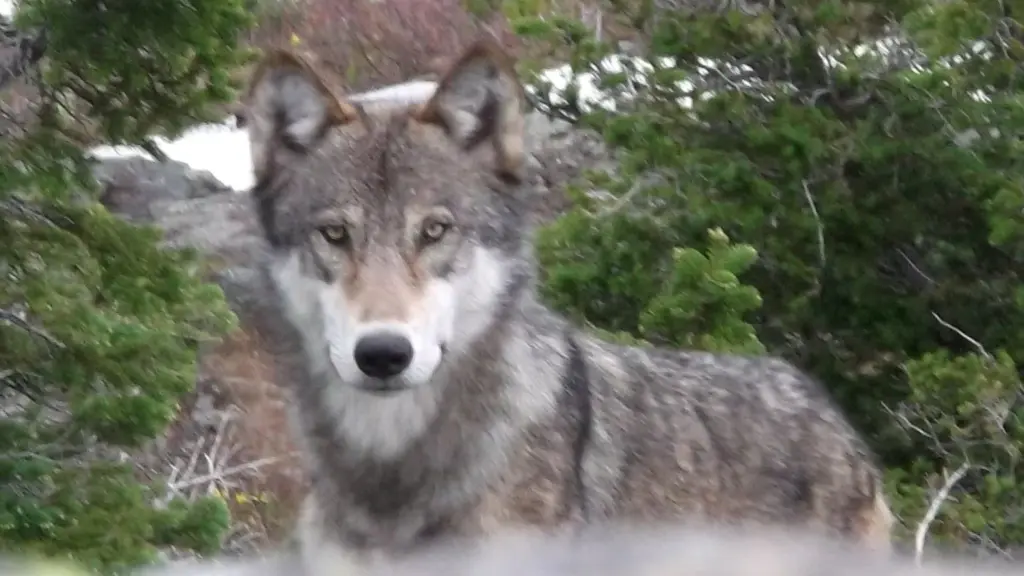BOISE, ID – Officials with the Idaho Department of Fish and Game estimated the wolf population in Idaho to be about 1,235 wolves as of May 2024, which state officials said Thursday is a decrease of almost 100 wolves from the year before.
Idaho’s wolf population estimates for May using new ABC method
- May 2024: 1,235
- May 2023: 1,333
- May 2022: 1,1211
- May 2021: 1,592
- May 2020: 1,688
- May 2019: 1,642
Source: Idaho Department of Fish and Game
Idaho Department of Fish and Game Wildlife Research Manager Matt Mumma presented the new population estimate and a summary of the new methods the state uses to estimate the wolf population at the Idaho Fish and Game Commission’s meeting Thursday in Coeur d’Alene, which was streamed live online by the state.
After years of reporting the state’s estimated wolf population as of Aug. 1, Fish and Game officials switched to estimating the wolf population as of late May with this week’s report.
The different reporting dates are part of a larger change where the state switched from deploying trail cameras, which were used from 2019 to 2023, to estimate its wolf population. Idaho is now using a new method, which involves collecting age and genetic information from a tooth from every wolf killed in Idaho, to estimate how many new wolf litters the state has, as well as Idaho’s overall wolf population.
Officials call the new method the ABC method, which is short for Approximate Bayesian Computation.
Counting wolves in Idaho using the ABC population method
As Fish and Game officials refined the new ABC population method over the past year, adding additional data to the model resulted in changes to previous years’ wolf population estimates, state officials said.
Idaho Department of Wildlife Bureau Chief Shane Roberts told the Sun on Friday that state officials added an additional four metrics to the ABC method after it was unveiled last year. Based on that additional data, Roberts said the ABC method produced higher wolf population estimates for several previous years.
“It did make all our previous estimates go up slightly,” Roberts said in an interview Friday.
Some outside researchers had been critical of Idaho using trail cameras to estimate wolf populations, and Idaho Department of FIsh and Game officials acknowledged last year that the trail cam methods could become less accurate as the wolf population decreases.
Wildlife biologists and experts estimate the wolf population because wolves are too elusive and Idaho is too rugged and remote for officials to undertake an actual physical count of every wolf in the state.
Roberts said the changes in population estimation dates and the new methods are all designed to help the state produce the most accurate wolf count possible using that latest data and most accurate methods.
Roberts said Idaho Department of Fish and Game officials realize some of the changes may be confusing to the public. But he said the state plans to use the May numbers and the ABC model consistently going forward.
When analyzing Idaho wolf population trends over the years, Roberts said it is important to make a distinction that previous population estimates were tied to August and the new numbers are tied to May – and there is a difference between the two. Roberts also said he continues to have confidence in the trends that previous wolf population estimates reported.
“I do believe the general trends of all those estimates combined, regardless of methodology, the trends are telling us what we believe to be the true story of wolves,” Roberts said.
“The general trends are telling the story of gradual growth followed by gradual decline,” Roberts added.
Reporting Idaho’s wolf population in May yields highest possible wolf population count due to birth of new pups
One of the effects of changing the population estimate to May is that the new reporting date will produce an estimate of the state’s wolf population at its highest level of the year due to the dynamics of Idaho’s wolf population.
“You might find this up and down pattern strange, but the reason for that up and down pattern is because wolves give birth to litters in April and May, and so that’s the very top of wolf abundance,” Mumma said during Thursday’s meeting. “And then through natural mortality and harvest (hunting), the wolf population slowly declines until the following April-May time period when they give birth to more wolves.”
Therefore any wolf population number from August would be expected to be lower than a population number taken in May, which would be expected to be higher.
The impact of changing the reporting time period does make a difference.
During the July 2024 Idaho Fish and Game Commission meeting, Fish and Game officials estimated the state’s wolf population at 1,150 wolves as of Aug. 1, 2023.
This year, Idaho Department of Fish and Game officials estimated the state’s wolf population at 1,235 wolves as of late May 2024.
State officials said there were actually fewer wolves in 2024 than in 2023 even though the raw number attached to the 2024 estimate is higher than the 2023 estimated population number the state released a year ago.
Separately, Roberts also said additional metrics and data added to the ABC method this year produced a revised, slightly higher wolf population estimate for August 2023 than the original 1,150 wolf estimate. Roberts was out of his office Friday and did not have the revised August 2023 estimate available while being interviewed by the Sun. Roberts pledged to follow up later next week or in the near future with additional information about revised estimates and the expanded ABC method.
Overall, Roberts said the department switched to the May population estimate with the latest wolf population report because that is the most accurate time period to report wolves under the new ABC model, which estimates the number of new wolf litters each year.
Idaho’s new population estimate is essentially tied to the time right after the last littler of wolves in the state is born each year.
“The reasoning why we are shifting to May is one of the things the ABC method is estimating is the litters that are produced,” Roberts said. “It is essentially estimating its population at its peak abundance, right after the peak of reproduction.”
Similarly, Roberts said state officials used the August time period for the old trail camera estimates because officials used the cameras during the months of July and August to collect pictures of wolves. Releasing a population estimate tied to Aug. 1 each year was the most accurate way to report the wolf population based on when the trail cam photos were taken, Roberts said.
Some outside researchers have told the Idaho Capital Sun that the accuracy of the state’s wolf population estimate is extremely important with the state seeking to reduce its wolf population down to an average annual population of about 500 wolves.
Mumma, the wildlife research manager for Fish and Game, told commissioners Thursday that the state recently submitted its new wolf population estimation methods to a peer-reviewed journal for publication consideration.
This story first appeared on Idaho Capital Sun.





